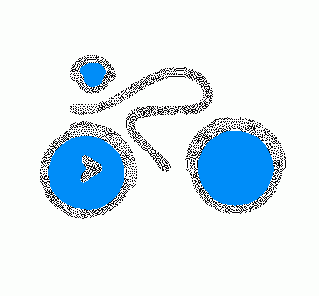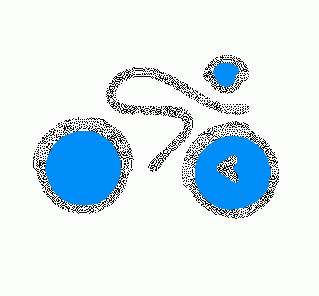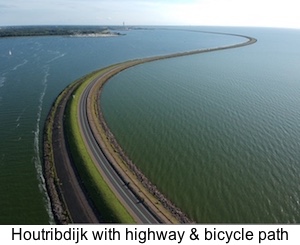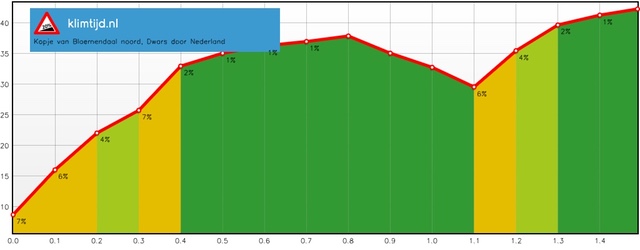| Newsletter - 2018 Archive |
 |
Cycling Club |
 |
| Newsletter - 2018 Archive |
 |
Cycling Club |
 |
Next--->


Kopje en Dijken 200 The plan this summer was to ride a 1000 or 1200 km brevet in Europe. After completing the series and then some by mid June, I was not sure whether I was quite ready for the Alienor d'Aquitane in SW France. That one looked like a beauty, including a climb up the (in) famous Aubisque in the Pyrenees. An opportunity to make history. It did not happen. First, a torrential rainstorm caused a landslide on the approach to the summit, forcing the organizers to change the route. Second, I did not go. Instead, I signed up for the 1200 km Brussels-Strasbourg-Brussels (BSB) over 4 days. As the event came closer. A monster of a heatwave settled in with temperatures forecast to go to 38C for three of the four days. And they did. After some soul searching I concluded that participation under those conditions was - let's say - less than healthy. So, I cancelled. Temperatures did indeed go that high during the event. Of the 33 people who had registered: 8 DNS and 10 DNF; 15 made it. The DNFs included very strong riders. The stories on the Belgian Rando website documented the challenge. A week later there was a 1000 km option, starting in Maastricht going south and around the Grand Duchy of Luxembourg, then along the Moselle to Koblenz and back to Maastricht. That event took place under similar hothouse conditions. I chatted with some of the participants a week later and they recounted stories, similar to BSB. While this summarizes the events I did not cycle, there was one I did: the 200 km Kopje en Dijken brevet (website: https://randonneurs.nl/event/brm-200-overveen-nl-kopje-en-dijken/) organized by the Dutch Randonneurs. It started near Haarlem, then wound its way to Hoorn and Enkhuizen, crossed the IJsselmeer on the Houtribdijk to Lelystad, followed by another section along the dike to Almere and back via picturesque routes to the finish. Close to 50 riders (Dutch, German, Japan, Italian, Canadian) showed up for this flat of flattest brevets with a total elevation gain of 130 meters (Note: you read this correct, there is no zero missing: one-three-zero meters) The elevation is gained from a 30m ascent, known as "het Kopje van Bloemendaal", a small incline in the coastal dunes, approaches to bridges and dikes, and last but not least the numerous 5 cm high speed bumps in urban areas. The latter were probably the toughest to conquer, that is for the need to slowdown. I must say that I did do some serious, specific and secret hill training for "het Kopje" in the days prior by cycling hilly sections in the dunes north of The Hague. All joking aside, the lack of elevation gain however was compensated for by (a) an ever-present wind up to and beyond 4 on the Beaufort scale, (b) numerous stop signs and traffic lights, and (c) many directional changes on the route sheet in the urban traffic maze. Among the participants were a few riders whom I'd met on past brevets, Ivo Miessen, Robert Lammers, Jos Verstegen and Ben Schippers. The latter two participated in the 2012 RM 1200. After the brevet I briefly chatted with Leo Forster, randonneur par excellence who has numerous PBPs under his belt and other monster distances in his legs. His passion showed when he recounted the stories. For me these encounters are always the icing on the cake. Kopje van Bloemendaal -Making a Mountain out of Molehill?  Profile Kopje: 1.5km long; average grade 2.2%; steepest 7.3%; elevation gain: 33 m; scores 30 points!! Source: https://www.klimtijd.nl/beklimming/kopje-van-bloemendaal-noord
Most of the riding was on designated bicycle paths, on or beside the many dikes. While this separated us from vehicular traffic on the adjacent highways, paying attention was still important as there was a quite a bit of oncoming traffic, mainly cyclists that is. Our first control was in the Almere posed a few challenges as we cycled through incomplete subdivisions and landscapes that looked quite unnatural. As quickly as we entered, we exited it and were on the mainland again. We cycled through Muiden with its historic castle, the 'Muiderslot' a place I had visited more than five decades ago during a school trip, evidence that history does repeat itself. Had to stop for a few minutes to put a few calories in the tank. After that, back in the saddle, moving through small villages along the many rivers Vecht, Gein and Amstel to name a few. In Weesp the situation got a bit dicey as we might had missed a turn, however before long we were able to get back on track on the road through an intriguing landscape. Quintessentially Dutch, with water, water, water everywhere: rivers, lakes, canals and drainage ditches. Dikes, windmills, you name it. The route followed small roads through the many small villages, neatly contained because of thoughtful regional and national planning. The result is a well preserved and vibrant cultural landscape that maintains its attractiveness. Weeping willow along the water's edge created a dreamy and placid environment. Watercraft of any type were as numerous as bicycles or other modes of transportation. They were ever present. In Uithoorn (Km 177) we took a break to get the control cards signed, and the body replenished with the essentials. The 'poffertjes' went down very well and helped to get the final leg to the finish done. After some 11 hours underway we pulled into the finish. Marvelous ride, good company with some challenges: route finding in urban areas and of course the headwind. Notwithstanding, a more than worthwhile brevet. After arriving at the finish, I enjoyed a great brew, something I had been looking forward to since the last control. It was more than worth it. Cheers. Thanks to Ernst for organizing this brevet.
Go to: Kopje en Dijken 200 event page (Randonneurs NL) October 9, 2018 |